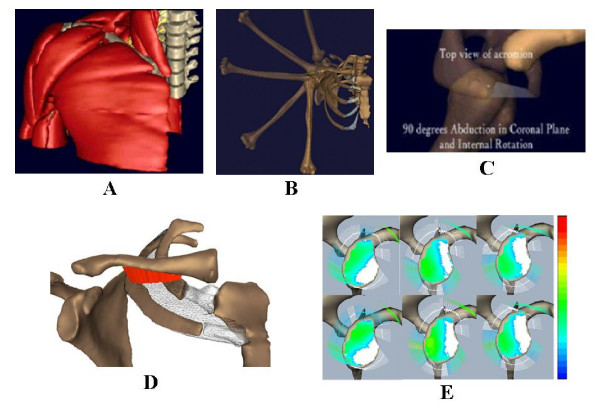Figure 3.
(A). A composite muscular, neurovascular and skeletal model of the shoulder visualized in a sequential manner from the superficial muscles to the underlying bony structure for anatomical studies. (B). The sequential images of a cadaver shoulder during passive elevation of the humerus in the plane of the scapula. These shoulder models were created from CT data of cadaver specimens. The kinematic data, measured by using electromagnetic "sensors" (Flock of Birds™, Ascension Technology, Colchester, VT) fixed to the humerus, scapula and clavicle and a "source" mounted on the trunk of the cadaver, was used to quantify the shoulder motion rhythm of all the bony structures involved. (C). A solid model of a cadaver shoulder highlighting the history of the closest points between the greater tuberosity and the acromioclavicular ligament during the Hawkins maneuver for impingement test. (D). The same model used to study thoracic outlet syndrome under provocative maneuver tests. The thoracic outlet area between the clavicle and the surface of the 1st and 2nd ribs (marked by the mesh structure) is quantified and highlighted in red color. (E). The glenoid surface model for joint contact area/stress and ligament-capsule tensile stresses study during arm elevation.

